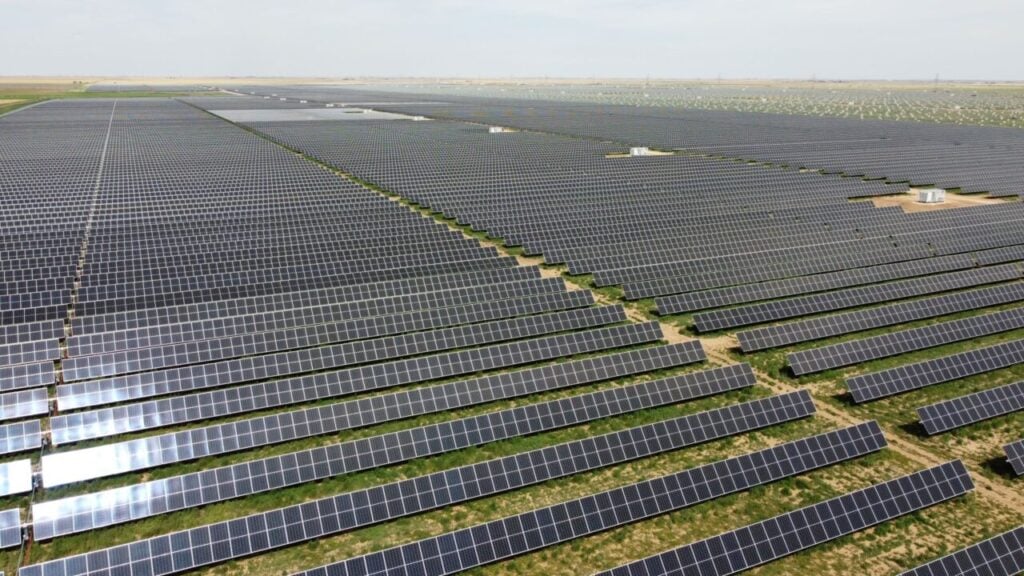
Texas-based renewables developer Vesper Energy has begun commercial operations on its 600MW Hornet Solar project.
The project, located over six square miles in Swisher County, Texas, is one of the largest single-phase PV projects in the US, comprising over 1.36 million solar modules, Vesper said. The company completed the construction of the site in January.
Unlock unlimited access for 12 whole months of distinctive global analysis
Photovoltaics International is now included.
- Regular insight and analysis of the industry’s biggest developments
- In-depth interviews with the industry’s leading figures
- Unlimited digital access to the PV Tech Power journal catalogue
- Unlimited digital access to the Photovoltaics International journal catalogue
- Access to more than 1,000 technical papers
- Discounts on Solar Media’s portfolio of events, in-person and virtual
Or continue reading this article for free
Vesper secured almost US$600 million in financing through a construction-to-term loan for the Hornet solar project in February 2024. The funding leveraged Production Tax Credit (PTC) funding under the Inflation Reduction Act (IRA) to the tune of almost US$500 million, Vesper said at the time.
The developers have also signed a number of power purchase agreements (PPA) with US companies, notably a 310MW virtual PPA for part of Hornet Solar’s capacity with pharmaceutical giant Pfizer in October 2021. At the time, Pfizer said the deal would “effectively power 100%” of its North American operations.
In November, Zach Wald, senior director of project execution, Vesper Energy, wrote for PV Tech Premium in November about the specifics of developing the Hornet project. He explained the challenges and particularities of developing a project of such significant size.
PV Tech publisher Solar Media will be organising the fourth edition of Large Scale Solar USA in Dallas, Texas 29-30 April. After a record year for solar PV additions in the US, the event will dive into the ongoing uncertainties on tariffs, tax credits and trade policies as more domestic manufacturing becomes operational. Other challenges, such as the interconnection queues and permitting, will also be covered in Dallas. More information, including how to attend, can be read here.






